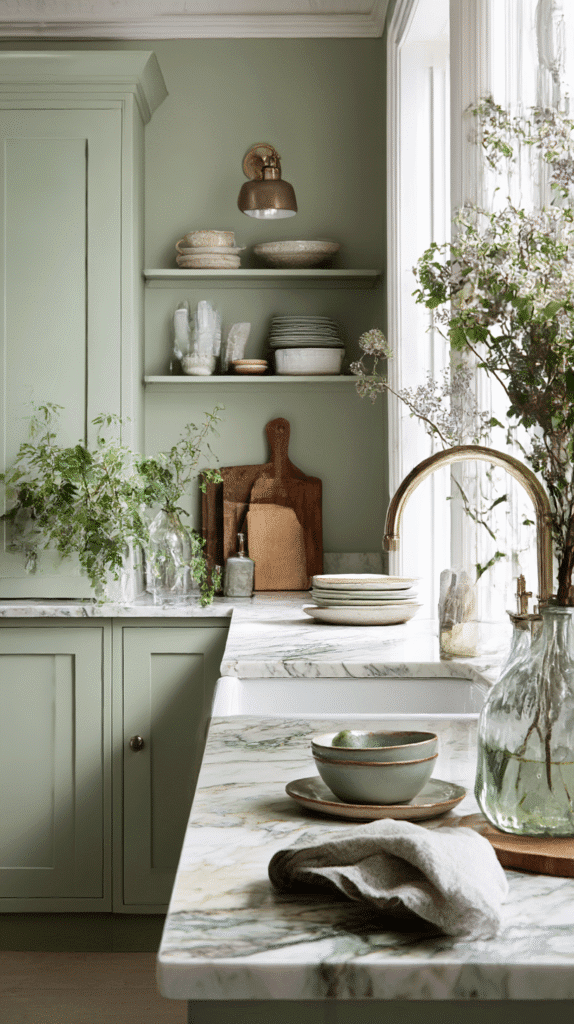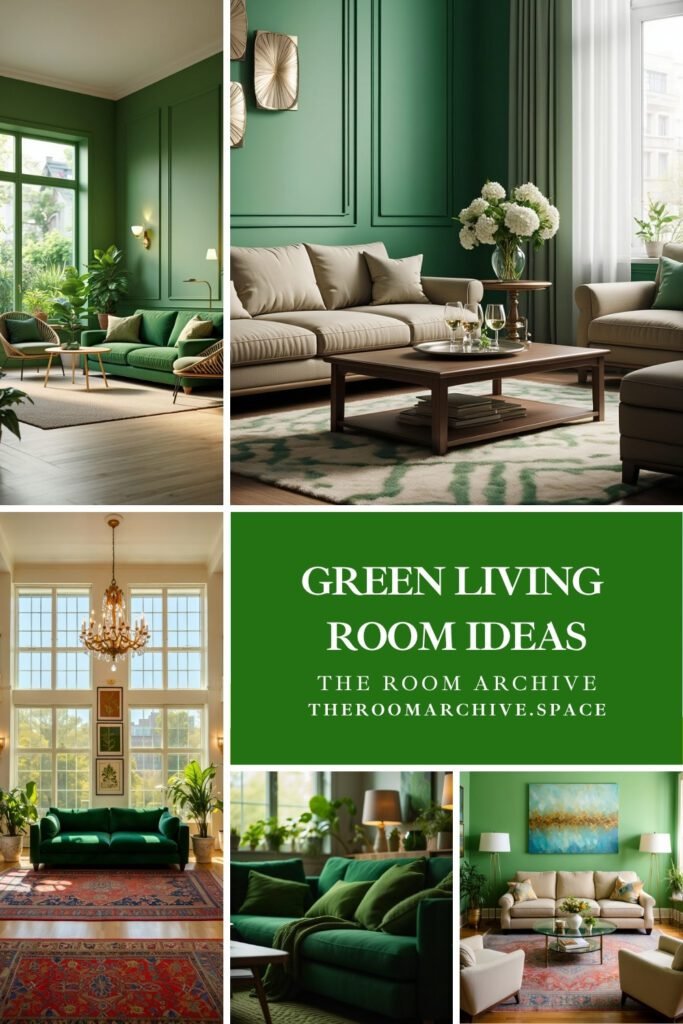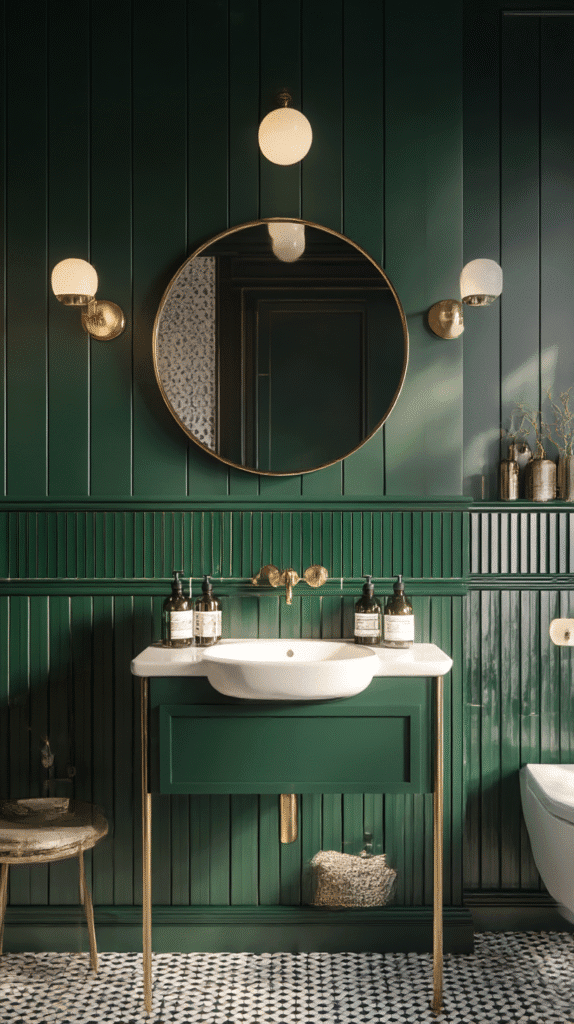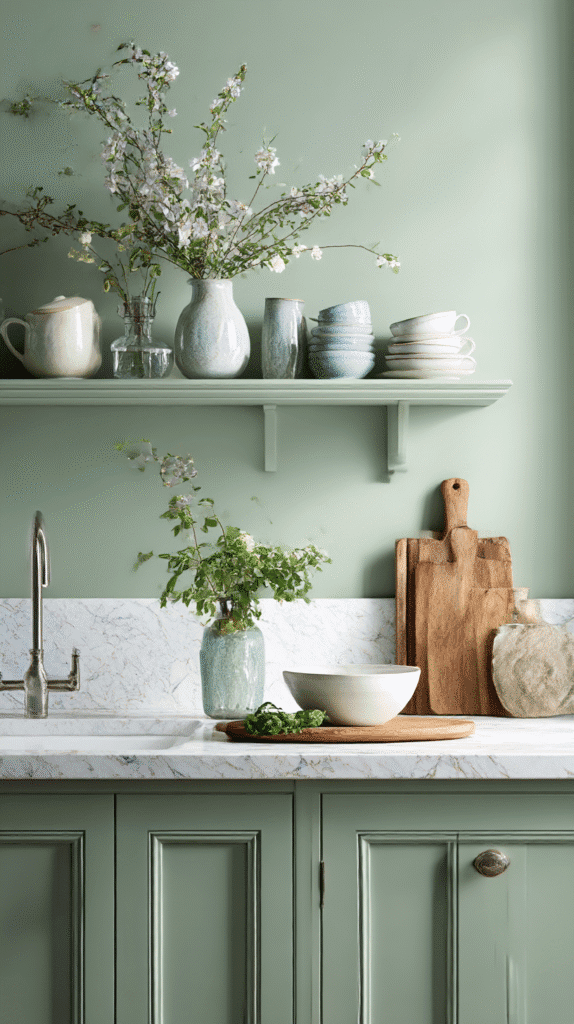
Why Sage Green is the New Trendsetter for Kitchens
If you’ve scrolled through Pinterest lately, you’ve likely encountered a flurry of sage green kitchens capturing hearts and repins. This soothing hue, often associated with renewal and tranquility, has emerged as a frontrunner in kitchen design, rivaling its more vibrant cousins like mint and forest green. So why sage green, and why now? With the global shift towards biophilic design—a philosophy that brings the outdoors in—sage green surfaces as a soft, nature-infused choice that harmonizes seamlessly with any modern interior.
What’s more, sage green isn’t just a fleeting trend. Pinterest Predicts, a trusted trend-spotter, projects that earthy tones like sage are here to stay, rooting themselves as a timeless choice for homeowners seeking both serenity and style. In this post, we’ll explore how to harness the power of sage green paint to invigorate your kitchen space, effortlessly marrying classic elegance with a contemporary twist.
Finding the Perfect Shade of Sage Green
Selecting the perfect shade is akin to a painter choosing the right pigment for their masterpiece. Not all sage greens are created equal. They’ll vary from muted silver-greens to dusty tones with a hint of warmth. Benjamin Moore’s “Sage Wisdom” offers depth with a soft grey undertone, priced at around $70 per gallon, a favorite among designers for its versatility. Meanwhile, Sherwin-Williams’ “Softened Green,” which retails for approximately $60 per gallon, provides a fresher tint that brings a crispness to smaller kitchens.
So, how does one go about choosing the right shade? Consider lighting first; natural daylight can bring out the vibrance in a cooler sage, while warmer shades thrive under artificial lighting. Test samples by painting swatches on various kitchen walls, observing how the color shifts from dawn till dusk. Tip: Avoid choosing a shade based solely on a paint chip; real-world application always alters perception.
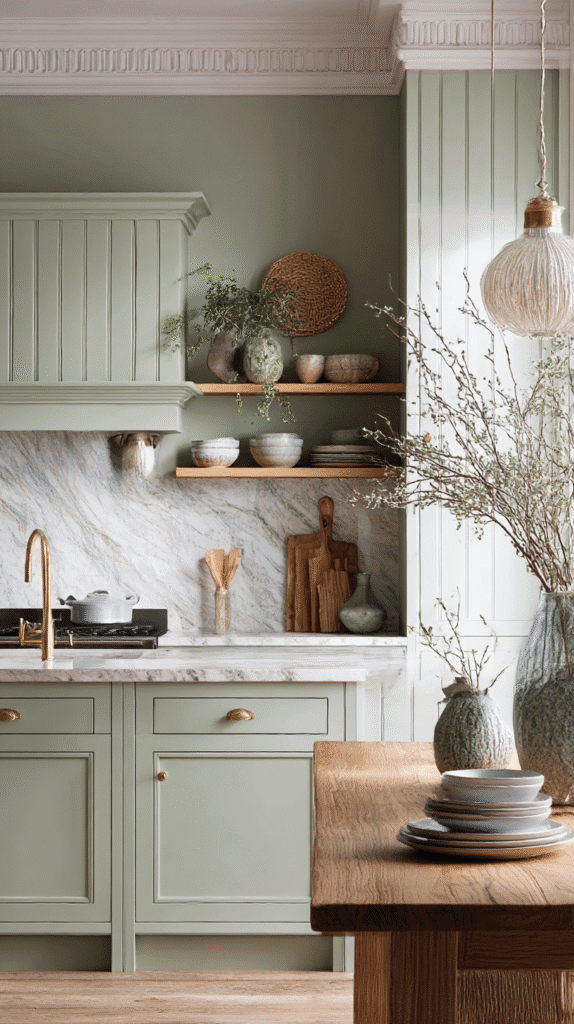
Seamlessly Incorporating Sage Green
A sage green kitchen doesn’t have to mean wall-to-wall color saturation. Sometimes, it’s in the accents and subtleties where magic happens. Begin with a focal point; this could be your cabinetry—a common choice—or a statement piece like an island countertop. Add complementary hues: think terracotta tiles for a rustic charm or polished chrome fixtures for a dash of modernity.
For those renovating on a budget, a simple yet effective method is to start small. Consider sage green backsplash tiles or reupholstering chairs in a complementary fabric. Storytime: When designer Emily Henderson revamp’ed her own studio kitchen, she strategically used Farrow & Ball’s “Breakfast Room Green” on the cabinetry, while keeping the walls an off-white, allowing for a bright, airy feel.
A Look Towards the Future: Trend Forecasts
Moving into 2026 and beyond, sage green is anticipated to evolve but remain prominent. Houzz’s latest kitchen trends report emphasizes a continued preference for organic palettes integrated with earth-inspired materials. Moreover, this trend aligns seamlessly with sustainable design practices, from recycled glass countertops to bamboo flooring.
Expect innovation in finishes too—matte has been the reigning champion, but semi-gloss and high-sheen finishes are nudging their way back, offering kitchens extra polish and ease of cleaning. As interior stylist Chipperfield notes on Instagram, “In a world full of trend volatility, sage green plants firm roots. It’s your forever go-to.”
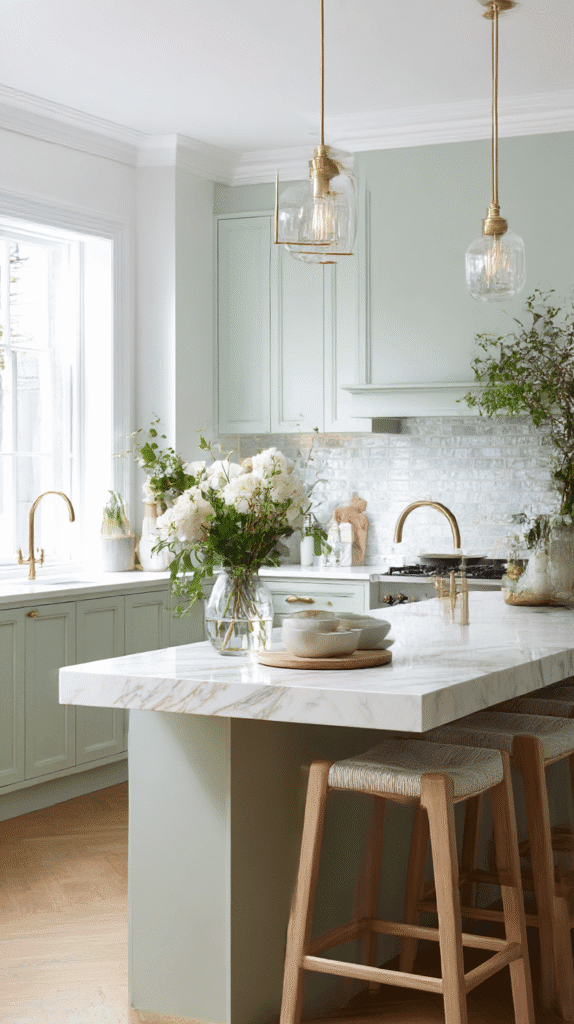
Common Sage Green Missteps to Avoid
Yet, not every dive into the world of sage green yields magazine-cover results. A frequent pitfall is overcoloring—overpowering your kitchen might make it feel cramped or overly themed. Balance is essential. Pair it with whites, pale woods, or stainless steel to maintain an open and sophisticated aesthetic.
Another trap is underestimating the power of contrast. Sage green thrives when juxtaposed with darker or more saturated colors, creating a dynamic and inviting space.
Expert Takes and Real-Life Inspirations
To ensure your sage green haven radiates style, take cues from industry experts. Designer Sarah Sherman Samuel suggests combining textures—think marble countertops against sage green cabinetry—to avoid monotony.
Case in point, on a recent episode of “Dream Home Makeover,” hosts Studio McGee showcased a farmhouse renovation where sage green island countertops acted as showstoppers amid white panelled walls, marrying modern elegance with rural charm.
In conclusion, crafting a sage green kitchen is about more than selecting a paint. It’s a curated experience, one that blends hues, styles, and textures to create a serene sanctuary. When executed correctly, a sage green kitchen not only elevates your home’s overall style but becomes a timeless testament to your design prowess. Ready to transform your culinary haven with this soothing hue? Let’s get started.
